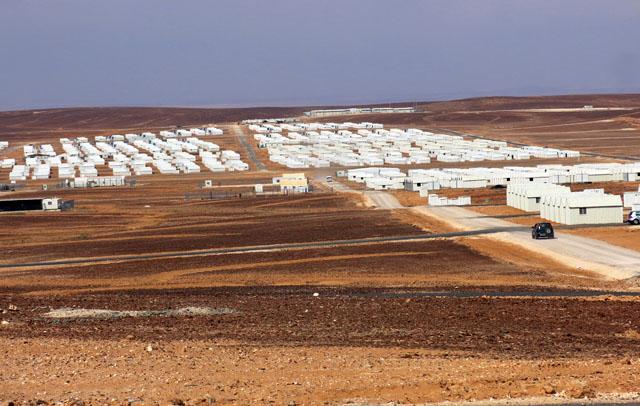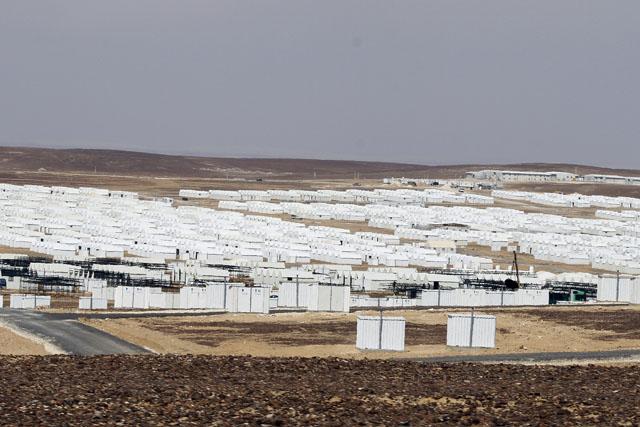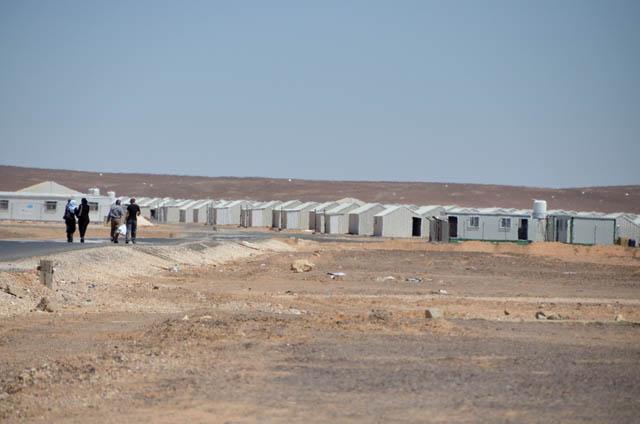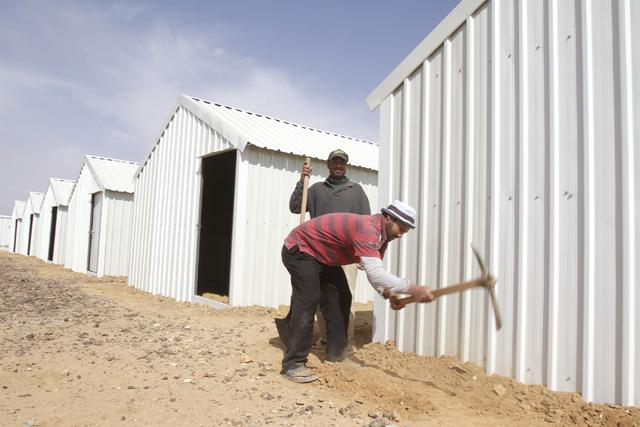You are here
Azraq ‘green’ refugee camp ready to host more Syrians
By Elisa Oddone - Mar 25,2014 - Last updated at Mar 25,2014

AZRAQ — The opening of a third refugee camp in Jordan next month would take some of the pressure off the country’s main Zaatari camp and host communities as a soaring number of about 600 refugees is crossing into the country daily, UN and local officials said on Tuesday.
The Azraq Refugee Camp, located some 100km east of Amman near the eponymous town in the Zarqa Governorate, will eventually be able to accommodate up to 130,000 people sprawling over 15 square kilometres.
“This camp is an international effort in support of the government of Jordan,” UNHCR Representative to Jordan Andrew Harper told a press conference in the camp, adding that “what is different at this camp compared to Zaatari is that we have had the time to prepare… and prepare we have”.
Azraq camp is planned to open around April 30, according to the UN official.
“There is an enormous need in Jordan, which is currently hosting over 600,000 Syrian refugees in addition to Iraqis, Sudanese, Palestinians, and every day we see hundreds more cross the border,” Harper said.
This week, between 600 and 800 Syrians have crossed into Jordan on a daily basis, according to the UNHCR.
Unofficial figures suggest the number of refugees in the Kingdom could amount to over one million, putting a strain on the country’s health and education services and the already scarce water resources in one of the world’s 10 driest countries.
“We must tell the international community that Jordan cannot do this alone, nor can the agencies do the impossible with nothing. Syria is a humanitarian disaster and Jordan is absorbing this humanitarian disaster off its own cost. The international support to Jordan has so far been insufficient,” Harper added.
The international community has invested JD45 million in the new camp, a cost that includes roads, infrastructure, shelters, a hospital, water systems, schools, a police station. The daily cost will depend on how many people will be in the camp, the officials said at the press meeting.
But using Zaatari as benchmark, providing support to its 100,000 refugees cost $400,000/500,000 on a daily basis, UNHCR figures show.
So far 3,000 units have been completed in the new camp, while around 800 more are under construction.
The UNHCR is committed to building 5,300 units before the end of April.
Each of the 24-square-metre house-like shelter costs JD1,900, and JD24 per person would be granted to each refugee per month in food.
“In December, we appealed for $1.2 billion in humanitarian aid, but so far we have received only 16 per cent. How can we continue to do what we are doing if the international community is largely ignoring or taking Jordan for granted?” Harper added.
Camp Security Director Colonel Atef Al Omoush said that the swelling number of the refugees has prompted the construction of the new camp.
“We decided on the location in April last year and we started building the facilities in Azraq in December,” Omoush told reporters.
“There are four villages inside the camp. Each will be provided with facilities to host between 10,000 to 15,000 refugees,” the official added.
The camp’s central hospital will be run by the Red Cross providing 50 beds, while two double-shift schools will accommodate 10,000 children. A daily supply of 1,500 litres of water would be delivered by tanks at first, pending the drilling of a well inside the camp.
Refugees who found sanctuary in Zaatari will not be relocated to Azraq. The new refugees who cross into Jordan after the opening of the camp would find shelter in the new facility, director of the Syrian Refugees Affairs Directorate, Brig. Gen. Wadah Hmoud, told the press conference.
“There is no indication the Syrian crisis is going to end soon; therefore, we need support from the international community. We are expecting big waves of refugees in the near future,” Hmoud added.
Twenty-one humanitarian agencies have jointly planned the camp, in collaboration with the government.
“Our common goal is to provide refugees with services as close as possible to their living areas. The camp infrastructure would serve an initial planning for 51,000 refugees. We have built this site in very close cooperation with the Syrian refugees directorate and involving the local community of Azraq,” UNHCR senior field coordinator Bernadette Castel-Hollingsworth told the press conference.
“We hope to save money concerning costs in Azraq. We have invested in solar energy so that in the long term, electricity consumption will not come at such a high cost as it does in Zaatari,” Castel-Hollingsworth said.
Neither the camp nor the refugees’ living areas have been electrified, UNHCR officials noted.
Solar street lights would be scattered across the camp, and refugees would be given solar lanterns to charge their electronic devices.
“We planned to electrify the camp but in a way it will allow us to manage the consumption of electricity. This will be a sort of green camp as we are also looking into solar farms. UNHCR is trying to switch to green energy in camps around the world but this would be the first of this kind considering its vastness,” Castel-Hollingsworth said.
Related Articles
The first group of Syrians has already arrived at the Azraq Refugee Camp, which will be officially opened on Wednesday, with a capacity of hosting up to 130,000 refugees.
The government and the UN on Wednesday officially opened a new camp for Syrian refugees in Jordan that they see has the potential to become one of the world’s largest refugee camps.
This weekend witnessed the largest daily number of arrivals of Syrian refugees to the Azraq Refugee Camp, 100km east of Amman, Andrew Harper, the UNHCR representative to Jordan, said on Saturday.

















